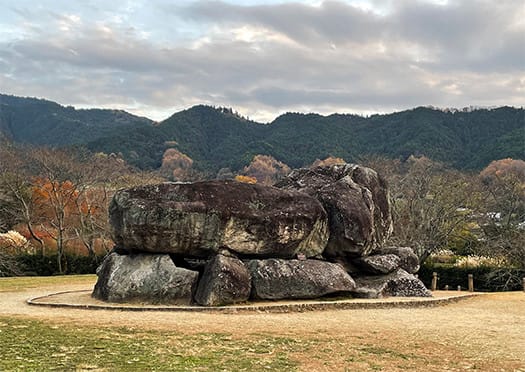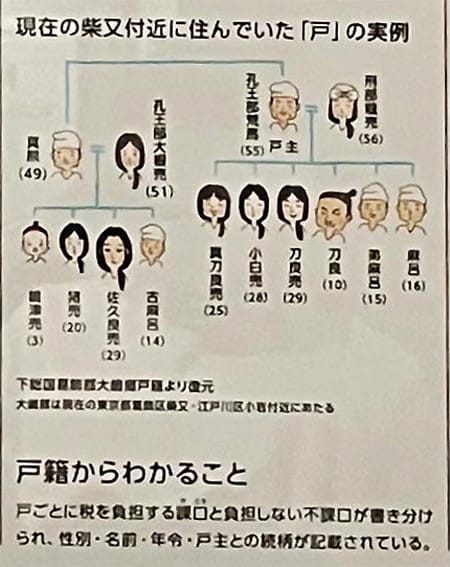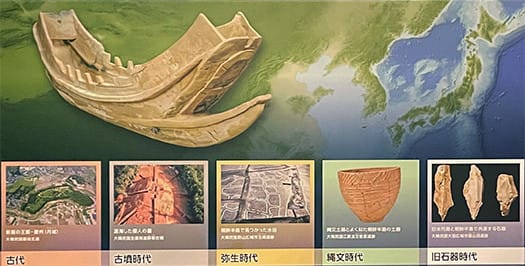

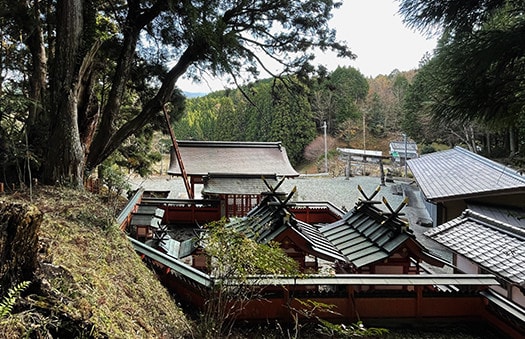
さて本日はついに大みそかであります。
「住宅探訪」をメインテーマとしている当ブログで書き始めた「日本列島史」についてのシリーズ記事も今回で55回目となりました。
わたしは住宅が専門のメディア情報人ではありますが、家と人を考えるとき「日本人性」というテーマも同時並行で考えさせられます。
家には当たり前のように神棚や仏壇があることが日本の家の共通項。
北海道から各地域に「取材」が広がっていくと同時に歴史や古民家のありようなど精神史のようなものに興味が広がらざるをえない。
自分的には必然的なテーマの拡張ぶりですが、千葉県にある国立歴史民俗博物館の古代の展示大変革参観がきっかけで激しく刺激され列島史の扉を開けてしまった(笑)。
大みそかを超えてまだまだ続きそうですが、本日は一種のクライマックス。
磐余彦尊がはじめて天皇の位に着いた一連の説話、「神武東征(じんむとうせい)」神話の断面検証です。
上の写真は奈良県宇陀にある「桜実神社」境内にある「八ツ房杉」の様子。宇陀は、大和平野の東側の山岳地域にある。
日本書紀の重要部である神武東征説話にとって枢要の場所。
この八ツ房杉は神武天皇が大和平定のためにこの地に陣を張っていた時に植えられたものと伝えられる。
書紀の記述などではこの前後の事跡については以下のよう。
〜宇陀にはエウカシ(兄宇迦斯)とオトウカシ(弟宇迦斯)の二人の兄弟が住んでいた。
兄のエウカシは、お仕え申しましょうと偽って大殿を作りその御殿の中に
押罠を仕掛けて待っていたとき弟のオトウカシが密告したので、
ミチノオミ(道臣:大伴連の祖先)とオホクメ(大久米:久米直らの祖先)の二人が、
エウカシを自分で作った押罠で殺してしまった。〜
この八ツ房杉、見た感じではやはり「八岐大蛇〜ヤマタノオロチ」っぽい印象を持つ。
記紀の世界は正確な史実よりもその権力の正統性をその成立の頃の民の理解力に合わせてわかりやすい表現形式を取っている、と考えられ王権の草創神話として作為された可能性もある。
こうして写真を撮影にも行ったので、わたしとしてはあるがまま平明に受け取って再認識してみたいと思っています。
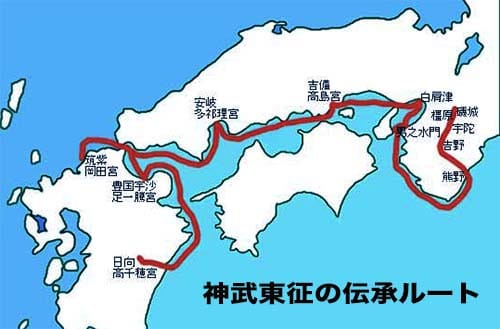
東征の出発地は経済的見方から間違いなく九州北部だろうと思います。
水田農耕によって富を蓄えていったこの地域のクニの「先進的支配層」のなかから、日本列島全体の「地政学」を広く研究した人びとが畿内地域の優位性に気づき、そこを占拠する作戦を遂行していった。
玄界灘〜瀬戸内海地域を移動するがそういう海民の交通ネットワークを早くから確保していたことが明白。
一度難波津に上陸するけれど奈良盆地を支配していたナガスネビコ(長髄彦)が軍勢を起こし撃退させられる。主将である神武の兄は矢を受けてのちに絶命する。
そこから紀伊熊野に迂回して奈良盆地の敵対勢力の東側に出て背後から襲って勝利する。
瀬戸内海に続いて「熊野水軍」とも思える海民ネットワークが大きく絡んでいると思えてならない。またこのことが「熊野信仰」の始原になったと思われる。
この宇陀の地は最初の征服戦での勝利。
現地に行って見ると宇陀は山間の土地で神武軍は隠密行動で敵の虚を突く作戦を展開したと思える。
ということで、ブログテーマは大和平野の古代に分け入っていく流れであります。
English version⬇
The Yatsubusa cedar is a Yamata-no-orochi! The First Victory of the Jinmu Expedition (The 37,000 Year History of the Japanese Archipelago, Vol. 55)
Almost every Japanese house has a Shinto altar. The spiritual history is strongly projected. The series of the history of the Japanese Islands finally reaches its climax (laughs). ...
Today is finally the big day of the year.
This is the 55th in a series of articles on the "History of the Japanese Islands" that I have started writing on this blog, which has "Exploring Housing" as its main theme.
Although I am a media informant specializing in housing, when I think of houses and people, the theme of "Japaneseness" also makes me think about it at the same time.
A common denominator of Japanese houses is the presence of a Shinto altar and a Buddhist altar as a matter of course.
As my "coverage" spreads from Hokkaido to various regions, at the same time my interest in things like spiritual history, such as history and the state of old houses, cannot help but expand.
It is an inevitable extension of the theme for me, but the visit to the National Museum of Japanese History and Folklore in Chiba Prefecture for a major reform of the ancient exhibition stimulated me intensely and opened the door to the history of the archipelago (laugh).
It will continue beyond the big day, but today is a kind of climax.
Today is a kind of climax. It is a cross-sectional examination of the myth of "Jinmu Tojo," a series of stories about the first time that Ianyohiko-no-mikoto assumed the position of Emperor of Japan.
The photo above is a view of the "Yatsufusa cedar" in the precincts of the "Sakurazane Shrine" in Uda, Nara Prefecture. Uda is located in the mountainous region to the east of the Yamato Plain.
It is a pivotal location for the legend of Jimmu's eastern expedition, an important part of the Nihonshoki (Chronicles of Japan).
This Yatsufusa cedar is said to have been planted by Emperor Jinmu when he encamped here for his campaign to pacify Yamato.
The following is a description of the events before and after this time in the Shoki (Chronicles of Japan).
There were two brothers living in Uda, Eukashi (elder brother Ukashi) and Otoukashi (younger brother Ukashi).
The elder brother, Eukashi, built a large palace under the pretense of offering his services.
And when he had set a trap inside the palace and was waiting, the younger brother Otoukashi snitched.
Michinoomi (an ancestor of Otomo-ren) and Ohokume (an ancestor of Kume Naoshi and others), who had made the trap for themselves.
Eukashi was killed with a trap of their own making.
This Yatsubosugi, as one can see, gives the impression of an "eight-forked serpent - Yamata-no-orochi".
The world of Kiki is thought to have taken an easy-to-understand form of expressing the legitimacy of its power according to the understanding of the people at the time of its establishment, rather than the exact historical facts, so it is possible that it was contrived as a pioneer myth of royal authority.
Since I went there to take pictures, I would like to receive and reacquaint myself with it, at least as it is, plainly.
From an economic viewpoint, the starting point of the Eastern Expedition was undoubtedly northern Kyushu.
From among the "advanced ruling class" of the Kuni in this region, who had accumulated wealth through rice paddy farming, people who had extensively studied the "geopolitics" of the entire Japanese archipelago realized the superiority of the Kinai region and carried out a strategy to occupy it.
It is obvious that they had secured the transportation network of such sea people from early on, although they moved between the Genkainada Sea and the Seto Inland Sea region.
Once they landed at Naniwazu, but Nagasunebiko, who ruled the Nara Basin, was able to raise an army and repel them. The leader of the army, Jinmu's elder brother, was hit by an arrow and later died.
From there, he diverted to Kii Kumano, and went out to the east of the hostile forces in the Nara Basin and attacked them from the rear, winning the battle.
It is hard not to think that the "Kumano Suigun," a network of sea people following the Seto Inland Sea, was heavily involved in the battle. This is also thought to have been the origin of the Kumano faith.
The land of Uda was the site of the first victory in the war of conquest.
When I visited there, I found that Uda was a mountainous area, and it seems that the Jinmu army deployed a covert strategy to exploit the enemy's weakness.
So, the theme of this blog is to go into the ancient history of the Yamato Plain.














